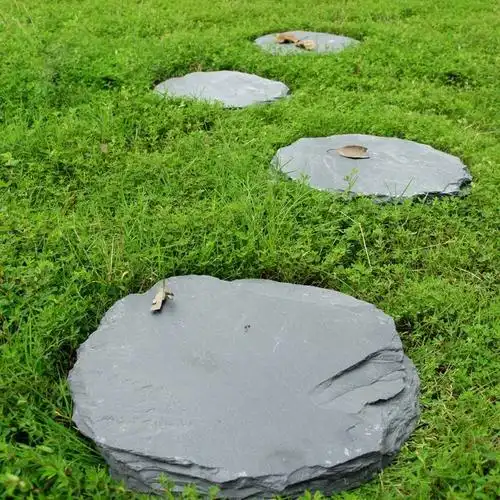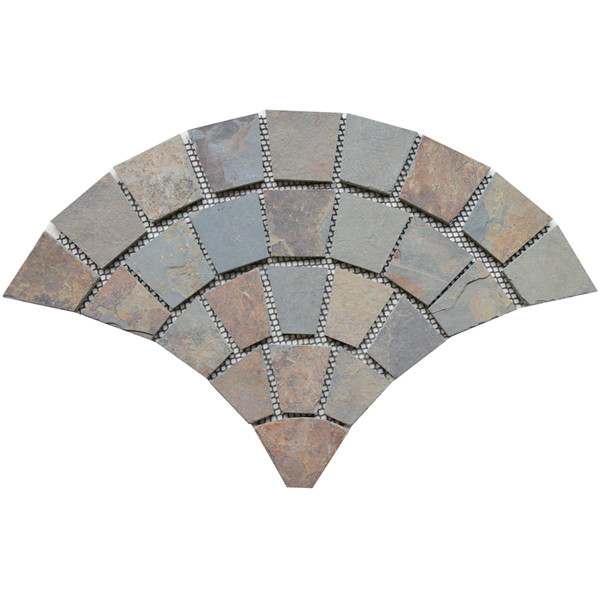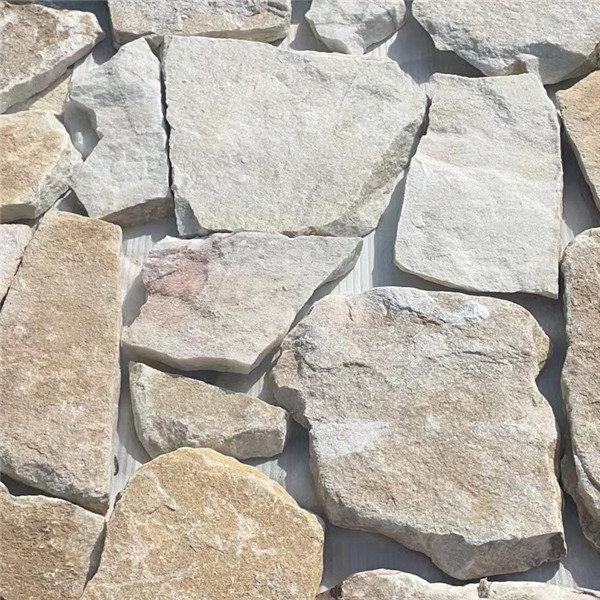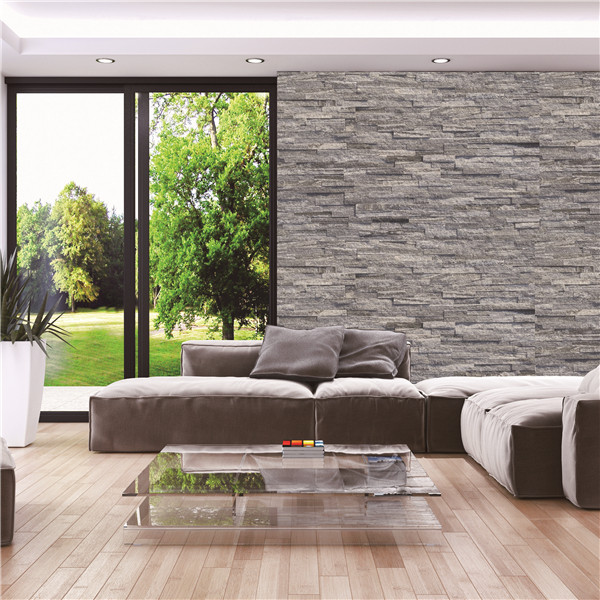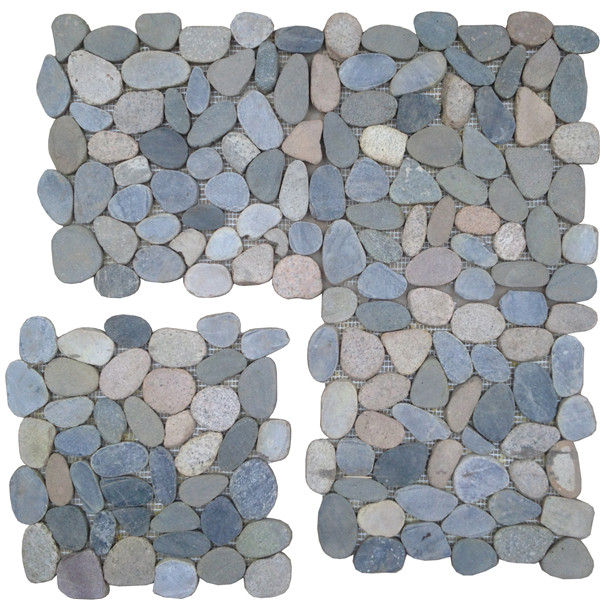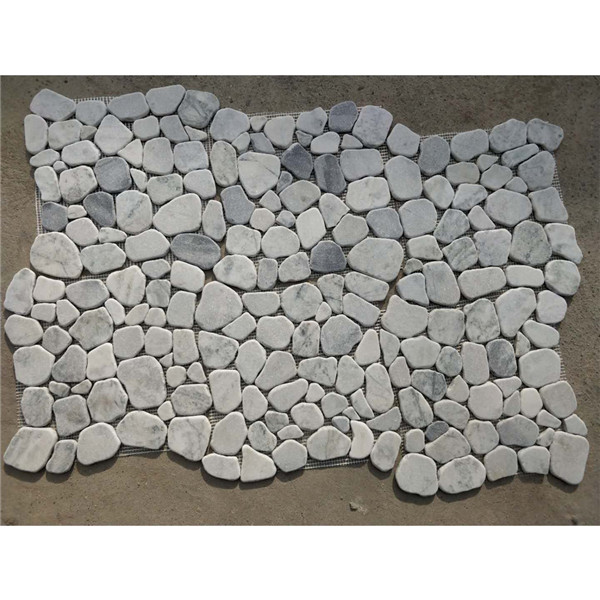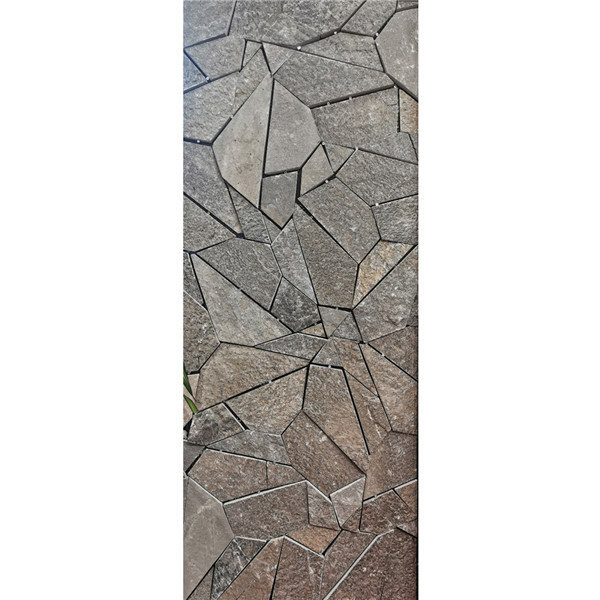Table of Contents
Toggle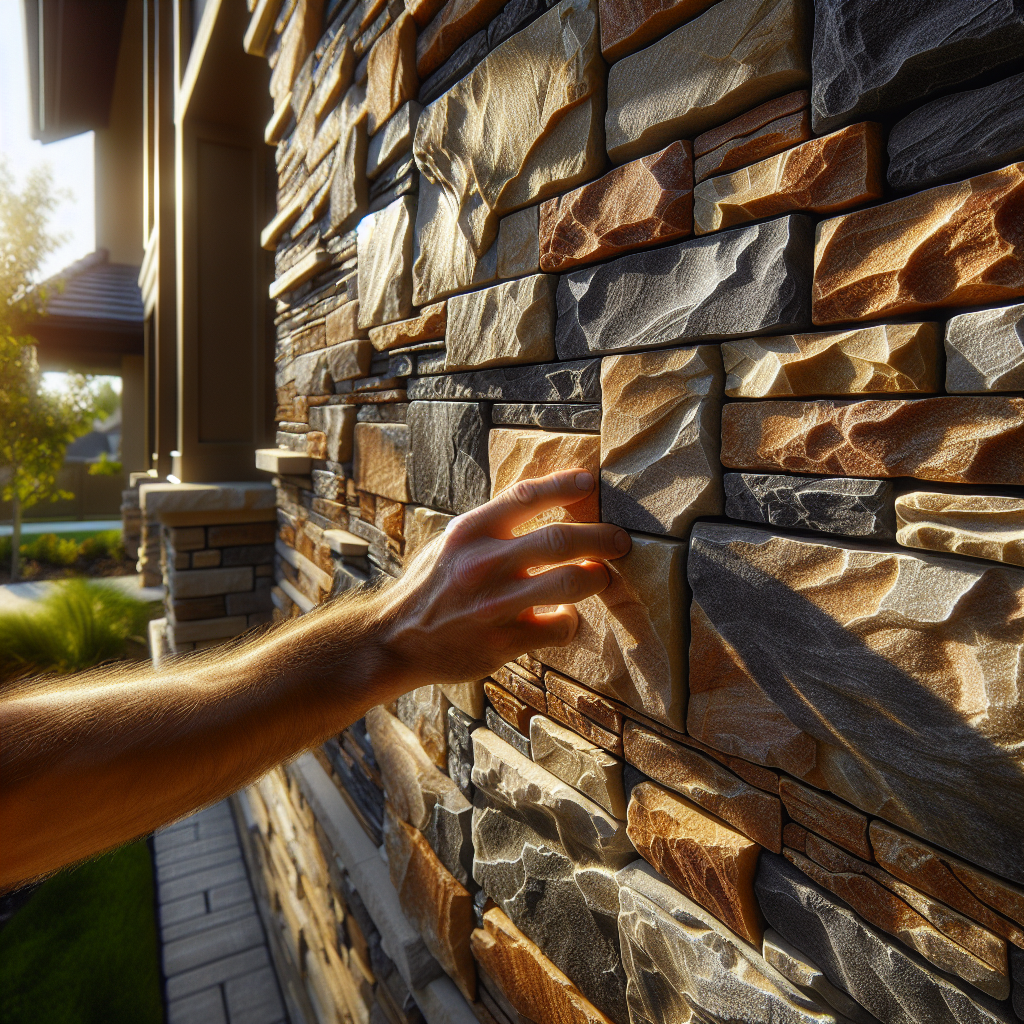
Stone veneer has become a popular choice for homeowners and builders looking to enhance the esthetic appeal of their projects. This versatile material offers the beauty of natural stone without the hefty weight and cost, making it an attractive option for both interior and exterior applications. From ledge stone to stone panels and stone siding, there are numerous options available to suit various design preferences and project requirements.
Choosing the right stone veneer can be a daunting task, given the wide array of styles, colors, and textures on the market. This article aims to guide readers through the process of selecting the perfect stone veneer for their project. It will cover important factors to consider, such as understanding different types of stone veneer, assessing project needs, evaluating color and texture options, and weighing installation methods. Additionally, the article will discuss maintenance and durability considerations, budgeting tips, and advice on sourcing and sampling stone veneer to ensure the best possible outcome for your project.
Understanding Stone Veneer Types
Stone veneer has become a popular choice for enhancing the esthetic appeal of both interior and exterior spaces. To make an informed decision, it’s crucial to understand the different types of stone veneer available in the market.
Natural vs. Manufactured
Stone veneer falls into two main categories: natural and manufactured. Each type has its own unique characteristics and benefits.
Natural stone veneer is quarried directly from the earth. Large pieces of stone are sliced into thin profiles to create veneers. This process results in a product that features imperfections, textures, and tonal variations formed over thousands of years. The authenticity of natural stone veneer is unrivaled, with no two pieces being exactly alike. The rich color variations and tactile textures make it a popular choice for those seeking a genuine, timeless look.
Manufactured stone veneer, also known as cultured stone, is a man-made product designed to resemble natural stone. It’s typically made from concrete and aggregate materials pressed into molds. Advancements in technology have allowed manufacturers to create realistic-looking products, especially when viewed from a distance. Manufactured stone veneer offers a wide variety of styles, patterns, and colors, giving homeowners and designers more flexibility in matching their desired esthetic.
When comparing the two types, several factors come into play:
- Appearance: While manufactured stone can look convincing from afar, natural stone often has a more authentic look up close. Manufactured stone may have repeating patterns or hand-painted finishes to achieve a unique look.
- Durability: Both types are considered durable, but natural stone often has an edge in long-term performance. Natural stone is generally less porous, enhancing its durability, especially when exposed to the elements.
- Color retention: Natural stone maintains its color over time, while manufactured stone may fade or discolor after prolonged exposure to sunlight, particularly in outdoor applications.
- Weight and installation: Manufactured stone is lighter and often easier to install, potentially reducing labor costs and installation time.
- Cost: Natural stone is generally more expensive than its manufactured counterpart, but it often provides better long-term value.
Popular Veneer Styles
Stone veneer comes in various styles to suit different architectural and design preferences. Here are some popular styles:
- Ashlar: This versatile style features stones of varying heights laid in a linear pattern. Ashlar stones typically range from 3″ to 10″ in size and have natural or snapped edges. It’s suitable for both large and small-scale projects and offers a timeless look.
- Castle Rock: Characterized by large rectangular pieces, usually 4″ to 12″ in height, this style is often installed with mortar joints. It’s commonly used in large-scale exterior projects and has a relatively low installation cost.
- Ledgestone: This style uses smaller stones, typically 1″ to 5″ in height, laid in a linear pattern. It’s popular for smaller walls, fireplaces, or wainscoting. Ledgestone can be installed with mortar joints or dry-stacked for a tighter fit.
- Mosaic: Also known as irregular or webwall, this style features stones with natural, random shapes. It’s versatile and can be used on both large and small projects, offering a unique, organic look.
- Dimensional: This style uses stones sawn to specific heights, typically 2.25″, 5″, and 7.75″. It offers a clean, formal look and is often the least expensive to install due to its standardized sizes.
Each style has its own installation considerations and esthetic appeal, allowing homeowners and designers to choose the perfect stone veneer for their specific project needs.
Assessing Your Project Requirements
When choosing the perfect stone veneer for a project, it’s crucial to assess the specific requirements of the space. Stone veneer is a versatile material that can enhance both indoor and outdoor areas, but selecting the right product involves understanding the unique challenges and features of the intended application.
Interior vs. Exterior Use
Stone veneer has become a popular choice for both interior and exterior applications due to its versatility and esthetic appeal. For interior projects, stone veneer is often used in specific areas of a room, such as fireplace surrounds or accent walls. These applications add texture and character to the environment, creating a focal point that draws the eye and enhances the overall design of the space.
Exterior applications of stone veneer typically cover larger areas, such as the front facade of a house, outdoor patios, or recreational spaces. When used outdoors, stone veneer can complement existing siding, columns, mailbox surrounds, decking, outdoor kitchens, and chimneys. It’s important to note that while many stone veneer products are suitable for both interior and exterior use, some may be specifically designed for one or the other. Therefore, it’s essential to verify the product’s suitability for the intended application before making a purchase.
Installation methods may vary depending on whether the stone veneer is being applied indoors or outdoors. For interior applications, stone veneer can often be installed directly on various substrates, including drywall, plywood, cement board, masonry, or concrete. Exterior installations typically require additional preparation to ensure proper adhesion and weather resistance. This may involve applying a weather-resistant barrier, metal lath, and a scratch coat of mortar before installing the stone veneer.
Climate Considerations
The climate in which the stone veneer will be installed has a significant impact on its longevity and performance, particularly for exterior applications. Different climatic conditions present unique challenges that must be addressed to ensure the durability and esthetic appeal of the stone veneer over time.
In areas with high humidity or frequent rainfall, moisture management is a critical concern. Proper installation techniques, including the use of appropriate moisture barriers and drainage systems, are essential to prevent water infiltration. Some stone veneer products, such as Be.On Stone’s panels, feature built-in drainage systems that help manage moisture and prevent damage caused by water accumulation.
Temperature fluctuations can also affect stone veneer installations. In regions with extreme heat, certain adhesives may soften or melt, compromising the veneer’s adherence to the substrate. Conversely, in areas with severe cold, mortar may not set correctly, affecting the veneer’s ability to bond with the wall surface. It’s crucial to choose products and installation methods that can withstand the temperature range typical of the local climate.
Wind resistance is another important factor to consider, especially in coastal areas or regions prone to severe storms. Proper framing, sheathing, and fastening techniques are essential to prevent detachment under high wind conditions.
Lastly, the presence of pests such as carpenter ants or woodpeckers in certain climates may necessitate additional precautions to protect the underlying structure and maintain the integrity of the stone veneer installation.
By carefully assessing these project requirements and climate considerations, homeowners and builders can make informed decisions when selecting and installing stone veneer, ensuring a beautiful and long-lasting result that enhances the overall appeal of their space.
Evaluating Color and Texture Options
Stone veneer offers a remarkable assortment of colors, shapes, and textures, making it an exciting option for both contemporary and traditional homes. When evaluating color and texture options, homeowners should consider how these elements work together to create a desired atmosphere and complement their home’s architecture.
Complementing Your Home’s Architecture
The choice of stone veneer color and texture has a significant impact on a home’s first impression and overall ambiance. To achieve a cohesive look, it’s essential to select options that harmonize with the existing architectural style. For instance, Tudor, Craftsman, French country, and Colonial-style homes often feature classic combinations of brick and stone, which can serve as inspiration for timeless designs.
When pairing stone veneer with other materials like brick, it’s important to balance their tones. A effective approach is to match darker brick with lighter stone or vice versa. This contrast enhances the visual appeal without overwhelming the exterior. To maintain overall cohesion, homeowners can match the shades of brick and stone with a unifying undertone or color fleck.
It’s crucial to examine samples in natural light at different times of the day to avoid unexpected visuals once the project is complete. This step helps ensure that the chosen colors and textures complement the home’s architecture and surrounding environment.
Creating Visual Interest
Stone veneer has the power to elevate interior design by adding instant sophistication to any space. Its rich textures and unique colors make it a versatile solution for bringing natural beauty indoors. From cozy fireplaces to stylish kitchen backsplashes and even mudroom makeovers, the creative possibilities with stone veneer are seemingly endless.
To create visual interest, homeowners can consider the following approaches:
- Accent Walls: Use stone veneer to cover a complete wall, creating a dramatic focal point in a room. This works particularly well in foyers, entry halls, stairways, or bedrooms.
- Texture Combinations: Combine different textures, such as stacked stone or ledge stone veneers, to add depth and character to a space.
- Color Palette: Choose a color palette that aligns with the desired atmosphere. Warm colors like red, orange, and yellow in dark stone veneer bring a sense of coziness and intimacy, while cool colors like green, blue, gray, and white create a calming effect.
- Balancing Act: When using a large expanse of stone, ensure that other elements in close proximity are serene and neutral to avoid visual overload.
- Mixing Styles: Achieve a balance between rustic and fresh by selecting stone veneer types with rugged textures in cool colors. This approach can create a modern twist on traditional designs.
By carefully evaluating color and texture options, homeowners can create spaces that feel energizing and productive, calm and soothing, or cozy and comfortable. The key is to incorporate the right combinations to achieve the desired atmosphere while complementing the home’s overall architectural style.
Considering Installation Methods
When it comes to installing stone veneer, homeowners and builders have several options to consider. The choice of installation method can significantly impact the final look, durability, and cost of the project. Two primary considerations are the use of mortar and whether to opt for professional installation or a DIY approach.
Mortar-Set vs. Dry-Stack
Stone veneer installation typically involves two main techniques: mortar-set and dry-stack. Each method has its own advantages and considerations.
Mortar-Set Installation: This technique involves using mortar to adhere the stone veneer to the surface and fill the joints between stones. Mortar-set installation offers several benefits:
- Durability: Mortared stone is sturdier and remains in place over time, making it ideal for exterior applications.
- Weather Resistance: The mortar helps reduce moisture retention, prevent insect intrusion, and keep stones securely in place.
- Versatility: Builders have more control over the look of the project, allowing them to create various styles from old-world to contemporary.
- Cost-Effective: Generally, mortared stone is less expensive to install than dry-stacking.
Dry-Stack Installation: This method involves carefully positioning stone pieces on top of each other without visible mortar joints. Dry-stacking has its own unique advantages:
- Esthetic Appeal: It creates a rustic, natural look that replicates stones taken from the field and piled atop one another.
- Design Flexibility: Dry-stacking allows for a more contemporary or minimalist appearance in certain applications.
- Interior Applications: It’s well-suited for interior projects not exposed to harsh weather conditions.
However, dry-stacking has some drawbacks:
- Labor-Intensive: It requires more precise cutting and careful placement of stones, leading to higher installation costs.
- Potential Shifting: Stones may shift naturally over time, potentially compromising structural integrity.
- Moisture Concerns: For exterior applications, some mortar may still be necessary to prevent water infiltration.
When choosing between mortar-set and dry-stack methods, consider the following factors:
- Project Location: For exterior projects, especially in areas with harsh weather, mortared stone is generally recommended for its durability and weather resistance.
- Design Esthetic: Determine whether a mortared or dry-stacked look better complements the overall design of the home.
- Budget: Dry-stacking typically has higher labor costs due to its more intricate installation process.
DIY vs. Professional Installation
The decision to install stone veneer as a DIY project or hire professionals depends on several factors:
DIY Installation: Homeowners with experience in construction and access to professional-grade tools may consider DIY installation. However, it’s important to understand the risks involved:
- Potential for Damage: Incorrect installation can lead to water damage, ventilation issues, or structural problems.
- Time-Consuming: DIY projects often take longer and may require multiple attempts to achieve the desired result.
- Limited Expertise: Homeowners may struggle with complex installation details or unexpected challenges.
Professional Installation: Hiring experienced contractors offers numerous advantages:
- Expertise: Professionals bring years of experience and knowledge of proper installation techniques.
- Efficiency: Skilled installers can complete the project more quickly and with fewer disruptions.
- Quality Assurance: Professional installation often comes with warranties and adherence to building codes.
- Problem-Solving: Experts can handle unexpected issues that arise during installation.
- Access to Specialized Tools: Professionals have the necessary equipment for precise cutting and application.
For most homeowners, professional installation is recommended to ensure a high-quality, long-lasting result that enhances the home’s beauty and value.
Factoring in Maintenance and Durability
Stone veneer is designed to be a low-maintenance option for enhancing the esthetic appeal of both interior and exterior spaces. However, to ensure its longevity and preserve its beauty, homeowners should be aware of proper maintenance techniques and the durability factors that affect stone veneer installations.
Cleaning and Sealing Requirements
Maintaining the appearance of stone veneer is relatively straightforward. For routine cleaning, a light spray or rinse with water is often sufficient to remove dirt and debris. In cases where stubborn dirt persists, a simple cleaning solution can be used:
- Mix warm water with a small amount of mild detergent in a spray bottle.
- Wet the stone surface with the solution.
- Gently scrub with a soft-bristled brush.
- Rinse thoroughly to remove any detergent residue.
For interior applications, dust can be easily removed using a vacuum cleaner with a brush attachment.
It’s important to note that certain cleaning methods should be avoided to prevent damage to the stone veneer:
- Do not use wire brushes, acids, or vinegar-based cleaners.
- Avoid pressure washing or sandblasting, as these can cause permanent damage.
Regarding sealing, it’s generally not required or recommended for manufactured stone veneer. In fact, applying a sealer may void the manufacturer’s warranty in some cases. However, if a homeowner chooses to use a sealant, it’s crucial to follow these guidelines:
- Use a high-quality, breathable concrete sealer, preferably silane or siloxane-based.
- Allow the stone to cure for a minimum of 10 days in dry, 50-degree weather before applying any sealant.
- Always test the sealant on a small, inconspicuous area first, as some sealers may alter the color and appearance of the stone.
Weather Resistance
Stone veneer is designed to withstand various weather conditions, but proper installation and maintenance are key to ensuring its durability, especially in harsh climates.
One common issue that may arise is efflorescence, which appears as a white, powdery substance on the surface of the stone. This occurs when moisture migrates to the surface, depositing salt. To address efflorescence:
- Try gentle cleaning methods first, such as scrubbing with a stiff brush and plain water or mild detergent.
- Rinse thoroughly to prevent dissolved salts from reappearing.
- Address any underlying moisture issues to prevent recurrence.
For exterior installations in cold climates, it’s crucial to consider temperature during the installation process. Stone veneer should not be installed when temperatures drop below 40 degrees Fahrenheit, as this can affect the curing process of the mortar or thin-set used for installation. If installation must proceed in cold weather:
- Tent the installation area.
- Use an artificial heat source to maintain proper temperature.
- Ensure safe and continuous operation of the heat source, with proper ventilation and monitoring.
By factoring in these maintenance and durability considerations, homeowners can ensure their stone veneer installations remain beautiful and long-lasting. Regular cleaning, proper sealing decisions, and attention to weather-related factors will help preserve the integrity and appearance of stone veneer for years to come.
Budgeting for Your Stone Veneer Project
When planning a stone veneer project, homeowners need to consider various factors that influence the overall cost and long-term value. Understanding these elements helps in making an informed decision and ensuring a worthwhile investment.
Cost Comparison of Different Types
To accurately compare the costs of stone veneer options, homeowners should take into account three primary expenses:
- Material costs, including shipping or delivery
- Installation expenses
- Long-term maintenance costs
Natural stone and brick typically come with higher price tags due to their weight and the specialized skills required for installation. These materials often incur substantial shipping fees and demand experienced masons who command premium rates for their expertise. As a result, exterior projects using natural stone or brick can be significantly more expensive.
In contrast, stone veneer offers a more budget-friendly alternative. Its lightweight design and user-friendly nature make installation faster and easier. Professionals who install stone veneer siding generally charge lower rates compared to stone or brick masons, as the work is less physically demanding.
When comparing natural stone veneer to manufactured stone veneer, the cost difference is not as straightforward as it might seem. While manufactured stone veneer may appear less expensive initially, natural stone veneer often proves to be more cost-effective in the long run. The durability and longevity of natural stone veneer contribute to its overall value, making it a wise investment for homeowners looking to balance upfront costs with long-term benefits.
Long-Term Value Considerations
When evaluating the long-term value of a stone veneer project, several factors come into play:
- Return on Investment (ROI): Stone veneer installations have shown impressive ROI potential. According to the Remodeling 2023 Cost vs. Value Report, adding stone veneer to a property’s exterior can recoup up to 95% of the installation cost upon resale. This makes it one of the top-performing home improvement projects in terms of ROI.
- Durability: Natural stone veneer is known for its exceptional durability. When properly installed, it maintains its original appearance for decades, eliminating the need for frequent replacements or repairs.
- Color Retention: Unlike manufactured stone veneer, natural stone veneer is not painted and therefore retains its color better over time. This quality ensures that the esthetic appeal of the project remains intact for years to come.
- Versatility: Natural stone veneer’s timeless appeal allows it to complement various landscaping designs and architectural styles, reducing the likelihood of needing to replace it to match future home improvements.
- Maintenance: Stone veneer requires minimal upkeep, contributing to lower long-term costs. Regular cleaning with simple tools like water, soap, and a sponge is usually sufficient to maintain its appearance.
- Enhanced Curb Appeal: The addition of stone veneer can significantly boost a property’s curb appeal, potentially leading to a quicker sale and a higher selling price when it comes time to put the home on the market.
By carefully considering these factors, homeowners can make an informed decision about their stone veneer project. While the initial investment may be higher compared to some alternative siding options, the long-term benefits, including durability, low maintenance, and potential ROI, make stone veneer an attractive choice for those looking to enhance their property’s value and esthetic appeal.
Sourcing and Sampling Stone Veneer
Selecting the perfect stone veneer for a project requires careful consideration and visualization. Homeowners and designers can benefit from various tools and services offered by stone veneer suppliers to make informed decisions. This section explores the process of requesting samples and visualizing the final look of stone veneer installations.
Requesting Samples
Many stone veneer suppliers offer sample programs to help customers make confident choices. These samples provide a tangible representation of the product’s color, texture, and quality. Stoneyard, for instance, offers natural stone samples for thin stone veneer, stacked stone, and stone panels. These samples are typically shipped on a sample board, allowing customers to view the actual product in their project location.
The process of ordering samples has been streamlined by many suppliers. For example, Stoneyard allows customers to order thin veneer samples directly from each product page on their website. This user-friendly interface makes the stone sample ordering process straightforward and effortless. Customers can simply browse through the products, choose their favorites, and submit their requests.
Mountain View Stone is another supplier that offers samples of all their brick veneer and stone veneer products. Their samples usually cover a 6″x6″ area and are made from actual product material. This allows customers to see and touch the product, gaining a good understanding of its weight, thickness, color, and color variation. As an added incentive, Mountain View Stone covers the shipping costs for their samples.
When requesting samples, customers should keep in mind:
- Samples are typically available for a nominal charge plus shipping.
- Each sample color is often shipped on a dedicated sample board.
- Samples allow for testing to ensure the product meets expectations.
- Expert assistance is usually available to answer any questions about the samples.
Visualizing the Final Look
While physical samples provide a tactile experience, visualizing how the stone veneer will look on a larger scale can be challenging. To address this, some suppliers offer innovative visualization tools. Stoneyard’s Stone Veneer Visualizer is an excellent example of such a tool designed to revolutionize project planning.
This cutting-edge platform allows users to virtually apply various styles and colors of stone veneer to a house, providing a realistic preview of the potential outcome. The visualizer offers three main options:
- Sample House: Users can experiment with various stone styles and colors on a sample house from the supplier’s gallery. This option is ideal for getting started and exploring possibilities.
- DIY: For a more personalized experience, users can upload a photo of their own house and manually apply different stone veneer options. This feature allows homeowners to see how the stone veneer would look on their actual property.
- Professional Assistance: Some suppliers offer a “Do It For Me” service where professionals digitally apply the stone veneer to a photo of the customer’s house, providing a realistic visualization of the final result.
The Stone Veneer Visualizer offers several benefits:
- Time and effort savings by allowing experimentation in a virtual environment
- Cost-effective exploration of design possibilities before ordering physical samples
- Empowerment for users to refine design ideas at their own pace
- Elimination of guesswork in selecting the right stone veneer
By utilizing both physical samples and visualization tools, homeowners and designers can make well-informed decisions about their stone veneer projects. These resources help ensure that the chosen stone veneer aligns with esthetic preferences and complements existing architectural elements, ultimately leading to successful and satisfying installations.
Conclusion
Selecting the perfect stone veneer for your project involves careful consideration of various factors. From understanding different types and assessing project requirements to evaluating color options and weighing installation methods, each step has a significant impact on the final outcome. The decision-making process also includes factors such as maintenance needs, durability, and budget considerations, all of which play crucial roles in ensuring a successful and satisfying stone veneer installation.
To make an informed choice, homeowners can take advantage of sample programs and visualization tools offered by suppliers. These resources allow for a hands-on experience with the material and provide a realistic preview of the final look. By carefully weighing all these aspects and utilizing available resources, homeowners can choose a stone veneer that not only enhances the esthetic appeal of their space but also offers long-lasting value and durability.




